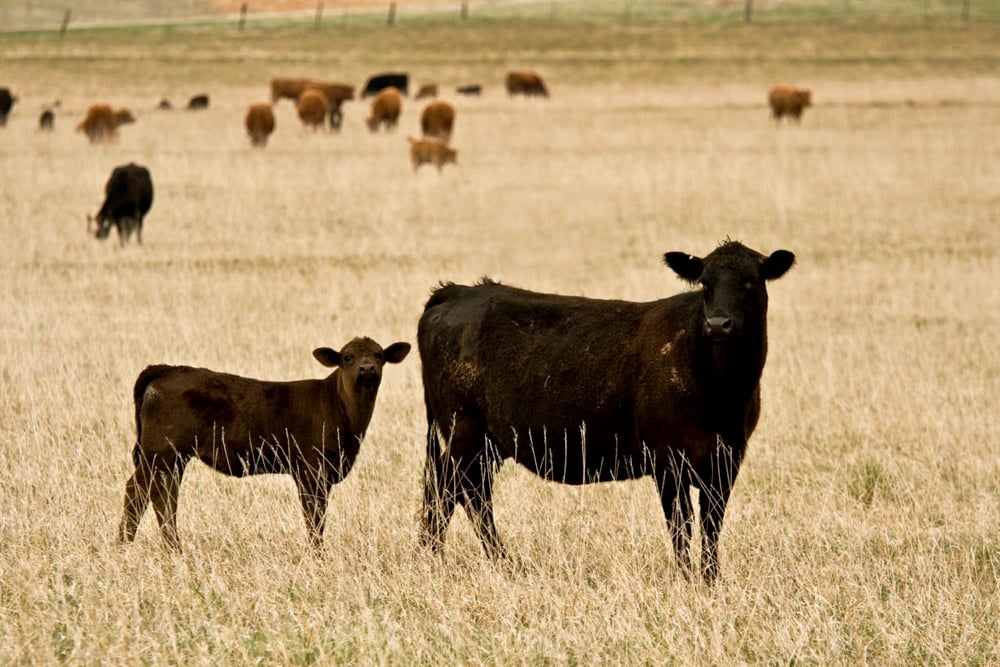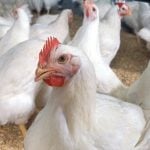Consolidation of "back-office functions," streamlining of operations, reduction of costs and shedding of assets are on the agenda over the next three years in Canada’s agriculture ministry.
Finance Minister Jim Flaherty, releasing the Conservative government’s 2012 budget on Thursday, announced plans that will see the federal agriculture portfolio’s overall annual budget reduced from current levels by $309.7 million by 2014-15.
"Agriculture and Agri-Food portfolio organizations will streamline their operations and reduce operating costs, while making sure services are provided to farmers and the agriculture industry in the most cost-effective and efficient way," Flaherty’s budget announced.
Read Also

Klassen: Feeder market extends rally
Western Canadian yearling prices traded back up to historical highs over the week ended Oct. 18, while calf markets made…
To that end, the budget said, Agriculture and Agri-Food Canada and the Canadian Food Inspection Agency are going to merge their "back-office functions" and will "integrate scientific research capacity and expertise through co-location and collaboration."
Agriculture and Agri-Food Canada will also consolidate the delivery of grants and contribution programs across the department, and will "streamline management" of the Farm Debt Mediation Service.
The budget aims to cut AAFC funding by $17.1 million from current levels in 2012-13, and by $168.5 million from current levels in 2013-14.
The budget also proposes transition funding of $27 million in 2012-13 and $17 million in 2013-14 for the Canadian Grain Commission, to see the commission move to "a sustainable funding model" and update its fee structure for its services.
Responding Thursday to the proposed budget cuts, the Grain Growers of Canada said it would reserve judgment "till we have more details regarding which programs will be trimmed," according to executive director Richard Phillips. "Potentially, these widespread cuts may not touch critical areas."
That said, "we will be looking for more detail where the cuts are coming from," Phillips said, noting government proposals for "the integration of scientific research capacity and expertise through co-location and collaboration."
"We need assurance that this will translate into more agriculture research and scientists on the ground," he said.
"We appreciate money is tight federally, but it is important to remember that agriculture didn’t cause (the federal) deficit, and in fact we have been one of the consistent bright spots in the economy," GGC president Stephen Vandervalk said in the same release.
"Single window"
The Canadian Food Inspection Agency (CFIA), also part of the AAFC portfolio, will see its budget cut from current levels by $56.1 million by 2015, starting with cuts of $2.1 million in 2012-13 and $10 million in 2013-14.
The agency, in Flaherty’s budget, is expected to "transform its service delivery approach by providing a single window for client applications for permits, licences and registration, as well as for the provision of technological, interpretive and specialized advice."
The government also plans to change how the CFIA monitors and enforces "non-health and safety" food labelling regulations.
The agency is also tasked with introducing a "web-based label verification tool that encourages consumers to bring validated concerns directly to companies and associations for resolution."
The government said it will also repeal regulations related to container standards, allowing industry to "take advantage of new packaging formats and technologies, while removing an unnecessary barrier for the importation of new products from international markets."
The budget also telegraphs cuts of $400,000 from the annual budget of the Canadian Dairy Commission, $300,000 from the Farm Products Council of Canada and $100,000 from the Canada Agriculture Review Tribunal, all by 2015.
"Broader range"
Other line items of interest to farmers, rural residents and commodity exporters include:
- up to $99.2 million over three years to fund "permanent flood mitigation measures" undertaken in response to floods in 2011;
- $27.3 million over two years for Transport Canada to support "divestiture of regional port facilities" and continued operation and maintenance for federally owned ports;
- $50 million over two years to support implementation of the federal Species at Risk Act;
- annual budget cuts from current levels totalling $86.9 million by 2015 for the government’s five regional development agencies; and
- $2 million in reduced tax revenue through expansion of the accelerated capital cost allowance for clean energy generation equipment, to include a "broader range of bioenergy equipment" such as systems that use plant biomass such as straw to generate electricity and heat.
The government also pledged to support rural broadband in its spectrum auctions for the 700 MHz and 2,500 MHz spectrum bands, planned for 2013.
Companies that get access to more than one block of the 700 MHz band, through either the auction or spectrum sharing, will be required to deploy new advanced services to 90 per cent of the population in their coverage area within five years and to 97 per cent within seven years.
The government also pledged to "streamline and improve" its Scientific Research and Experimental Development (SR+ED) tax incentive program. Farmers who pay checkoffs into organizations such as the Western Grains Research Foundation are able to claim SR+ED credits on a portion of their checkoff dollars.
The government on Thursday said it will narrow the base of SR+ED-eligible expenditures by removing capital expenditures incurred in 2014 and beyond. Eligible expenditures would still include salary and wages, materials, overhead expenses and contract payments.
Also, effective Jan. 1, 2014, the general SR+ED investment tax credit rate will be cut from 20 per cent to 15 per cent.
"Most resilient"
Canada’s agriculture sector was described in Thursday’s budget as "one of the most resilient through the economic downturn," noting the sector accounted for about two million jobs and eight per cent of total Canadian gross domestic product in 2009.
The government in 2012 will be working with the provinces and territories on a new federal-provincial-territorial agricultural policy funding framework to replace the current Growing Forward agreement, starting in 2013.
The new five-year framework agreement will set out policies and programs supporting a "modern, innovative and market-oriented sector," including a "refocused" suite of business risk management (BRM) programs.
















